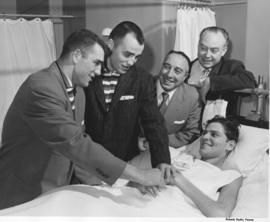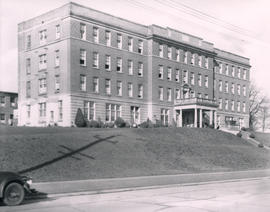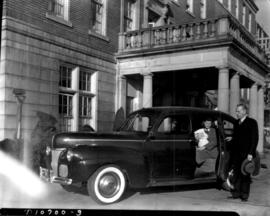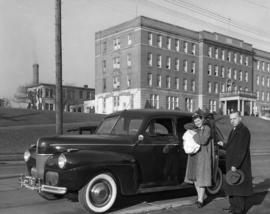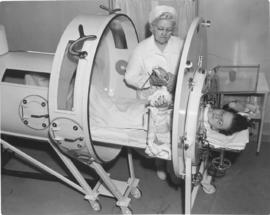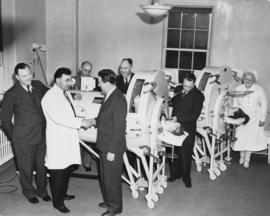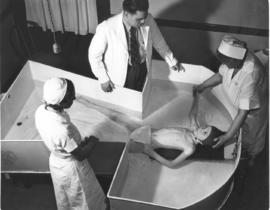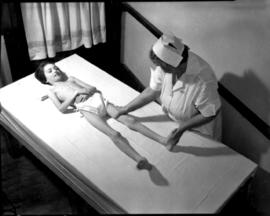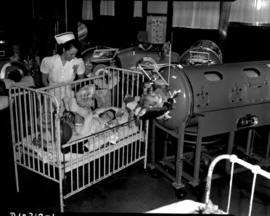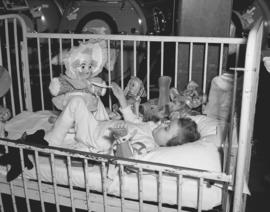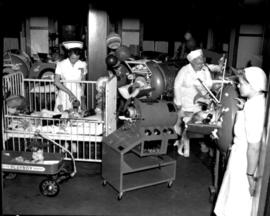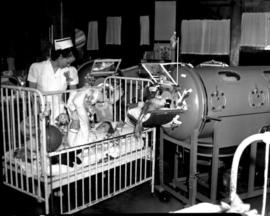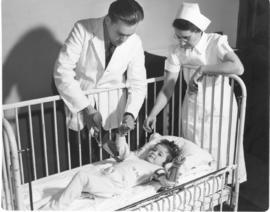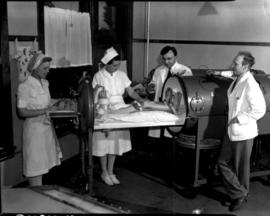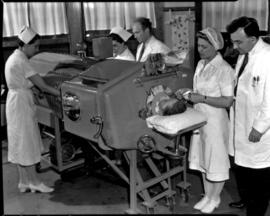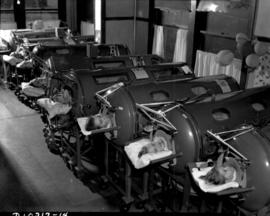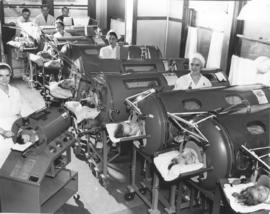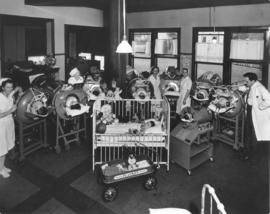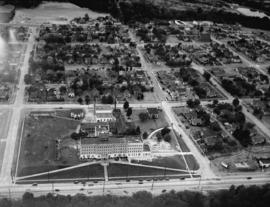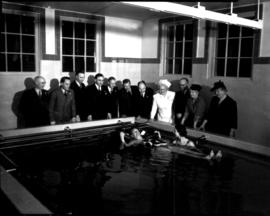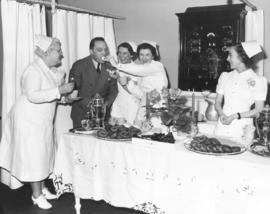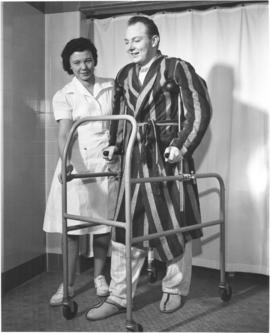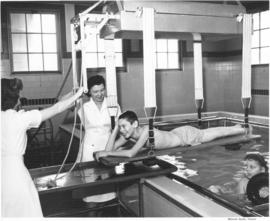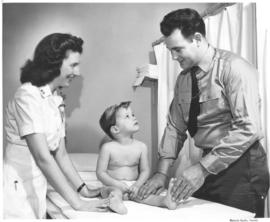- Item
- 1956-01-05
Part of Richards Studio Photographs
Matthew Fontana received a visit from two of his boyhood friends on January 5, 1956, Pat (left) and Mike McMurtry, while he was confined to his hospital bed at Pierce County Hospital. Fontana had contracted spino-bulbar polio, and had been at the hospital since Sept. of 1955. The McMurtry brothers were in town for the 8th Annual Tacoma Golden Gloves Tournament, scheduled to be held at the College of Puget Sound Fieldhouse. Looking on are Frank Gillihan, Pierce County campaign director for the March of Dimes and co-chairman of the Golden Gloves, and Pat Steele (far right), sports chairman for the March of Dimes. Photograph ordered by the March of Dimes. (TNT 1-20-56, p. 20)
Charitable organizations--Tacoma; March of Dimes (Tacoma); National Foundation for Infantile Paralysis (Tacoma); Poliomyelitis--Tacoma; McMurtry, Pat; McMurtry, Mike; Gillihan, Frank J.; Steele, Patrick;
